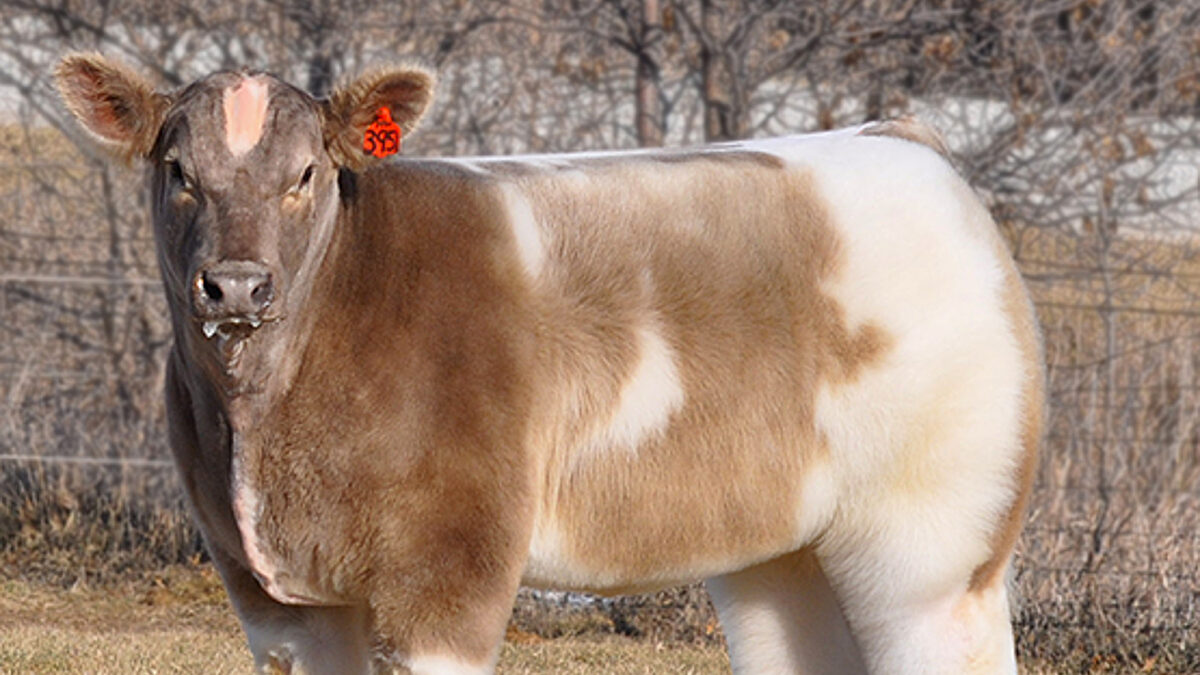Fluffy Cows Explained: From Farm to Internet Fame
Teresa Bjork

photo credit: Lautner Farms, Used with Permission
No one can resist cute animals, and adorable fluffy cows continue to take over our socials and melt the hearts of fans around the world.
It’s been over a decade since the original “fluffy cow” (#fluffycows) went viral, appearing on the Today show and in The Atlantic magazine.
It started in 2013 when a Reddit user posted a photo of a fluffy cow with soft, tan fur. It was so fuzzy and huggable, it looked like a gigantic Teddy bear. (Please don’t hug a fluffy cow, however; they prefer to be left alone.)
What are Fluffy Cows?
The original fluffy cow actually wasn’t a cow, or female. It was a male bull named “Texas Tornado” taken at the National Western Stock Show in Denver.
The bull was a commercial crossbreed, raised for excellent meat quality. Other popular fluffy cows you see online are Highland cattle, a shaggy-haired, long-horn breed originally from Scotland and known for its hardiness.
Lautner Farms is home to the original fluffy cow that started the social media sensation in 2013. This Iowa farm specializes in genetics for club calves (baby fluffy cows), which 4-H kids raise to show at their county fairs and livestock shows.
Farm families work year-round to make these fluffy cows look their best on show day.
Why are Fluffy Cows so Fluffy?
Farm families work year-round to make these fluffy cows look their best on show day.
The kids and teens who raise show cattle will wash, comb and blow dry their animals’ long hair daily, and sometimes twice a day.
Before the big show, the cattle are treated to a “spa day.” Their owners use hair spray, oils, blow dryers, brushes and clippers to cut, style and fluff up the animal’s fur.
All this extreme grooming helps earn the attention of judges, who evaluate the fluffy cow not just for its fabulous hair but also for its overall health, body composition (an indicator of meat quality) and breeding traits.
Cows are Extra Fluffy in the Winter
The original fluffy cow photo was taken in the winter, when cattle naturally grow a thick coat of fur.
Cattle are well-equipped to handle Iowa’s winter weather, explains Vanessa Trampel, a livestock farmer from Garner, Iowa. In fact, cattle prefer the cold to hot temperatures.
Cattle have built-in insulation against the cold with their thick winter coat, or hide. Plus, their average body temperature runs warm, around 101 degrees.
“Cattle do really well and thrive in the winter months,” Trampel says. “Between the heat and cold, there’s not a huge difference in how it affects the animal daily in regard to health overall.”
Farmers provide windbreaks, like tree plantings, wood panels or hay bales, for cattle to get behind when the wind chill drops. Many farmers also raise cattle under roof to protect the herd from winter weather.
Iowa dairy farmer Megan (@megan_dairygirl) shared this TikTok video to show how she keeps cows warm on her farm.
Trampel says farmers work year-round, in all kinds of Midwest weather, because they love caring for animals and working outdoors.
“If you as a consumer have questions about your food or how it was raised on a farm, go to the source. Ask a farmer,” Trampel says. “We all love to talk about what we do.”
To learn more about how Iowa farmers work to ensure meat quality, food safety and animal well-being, visit realfarmersrealfoodrealmeat.com.
Teresa Bjork is consumer content manager at Iowa Farm Bureau. This column was originally published on the Iowa Farm Bureau Farm Fresh blog and is republished with permission.
Top Issues
VIEW ALL